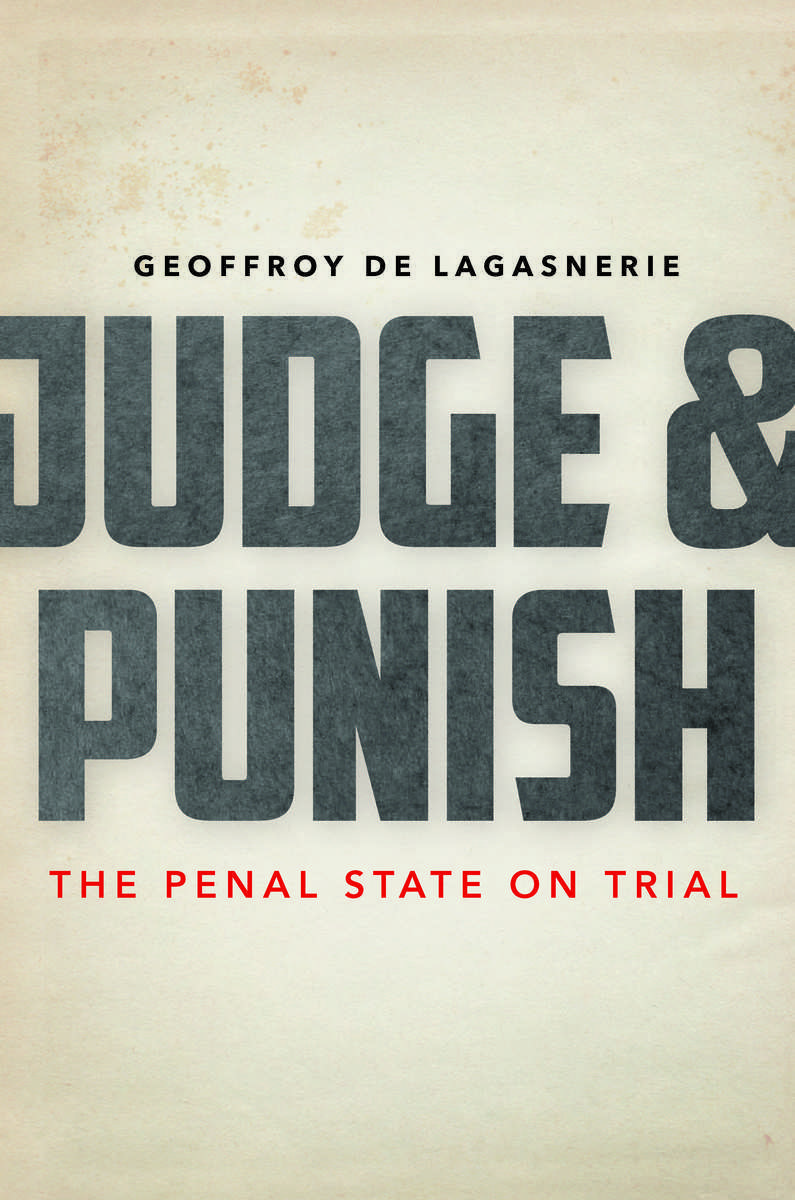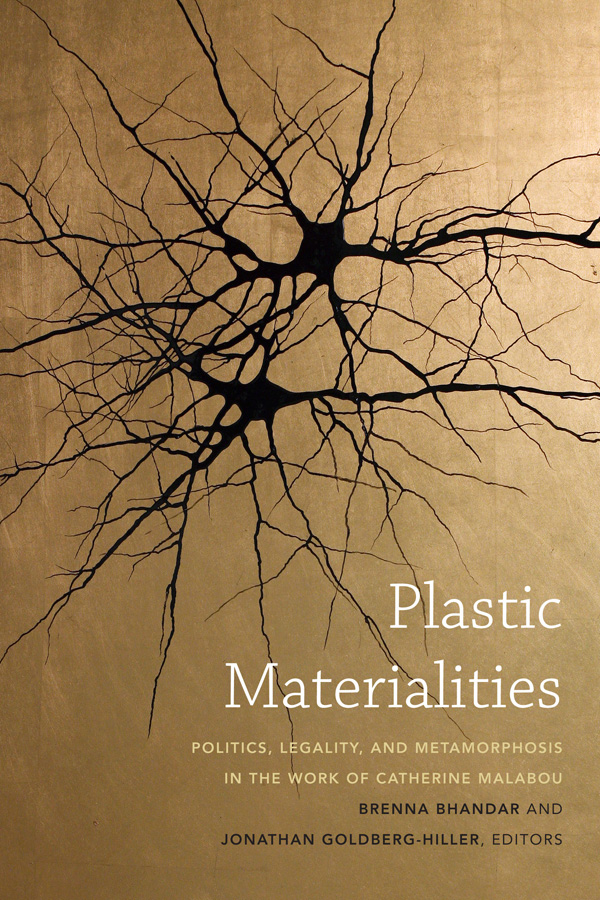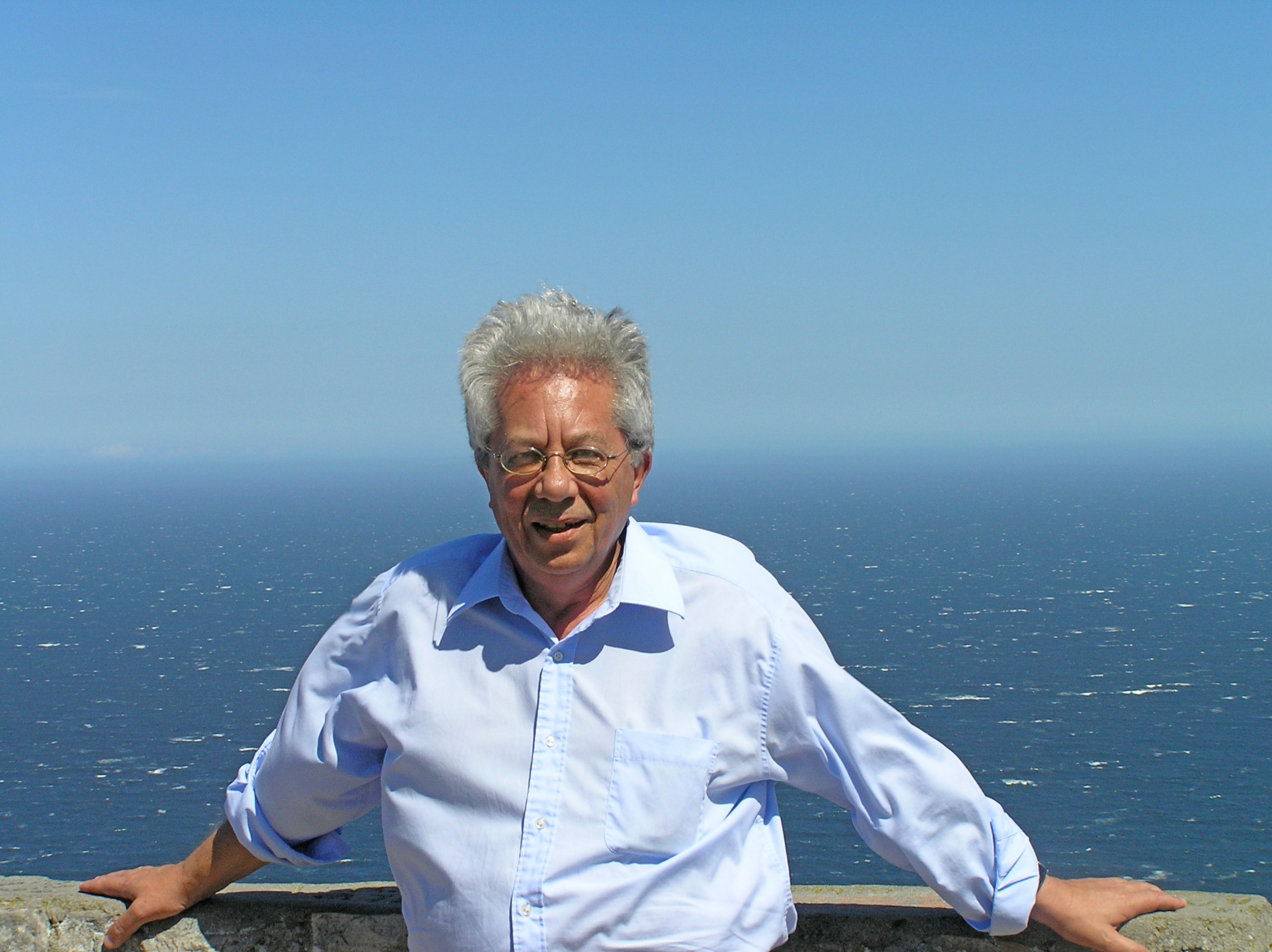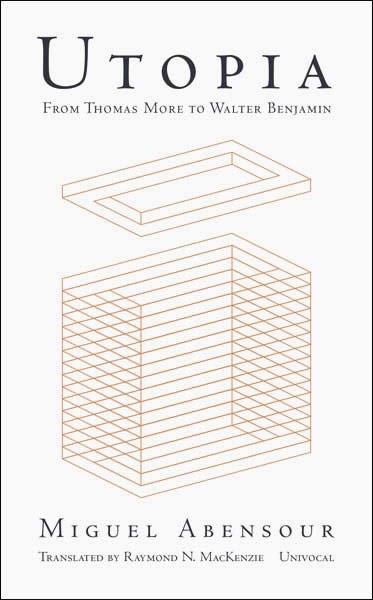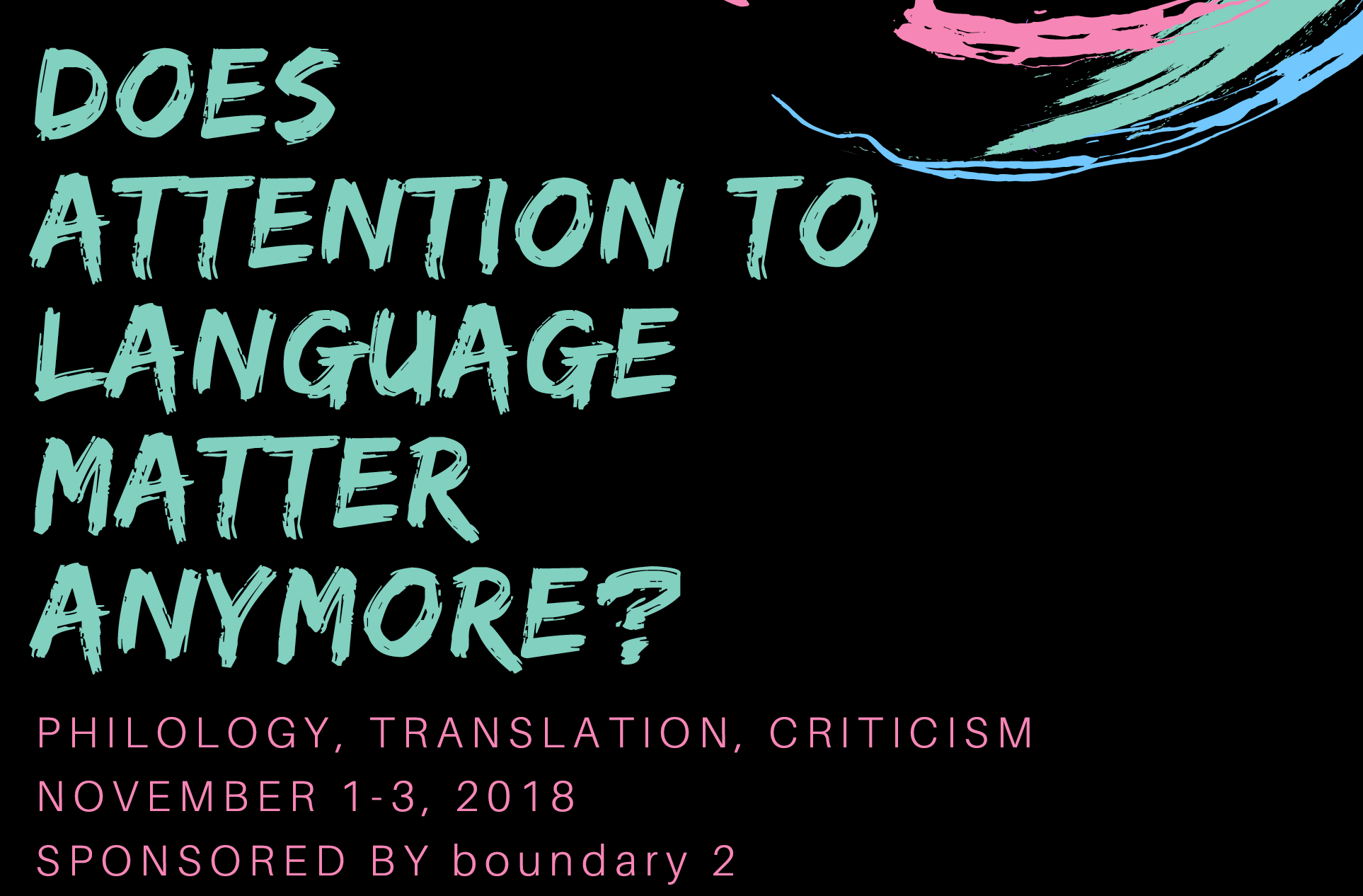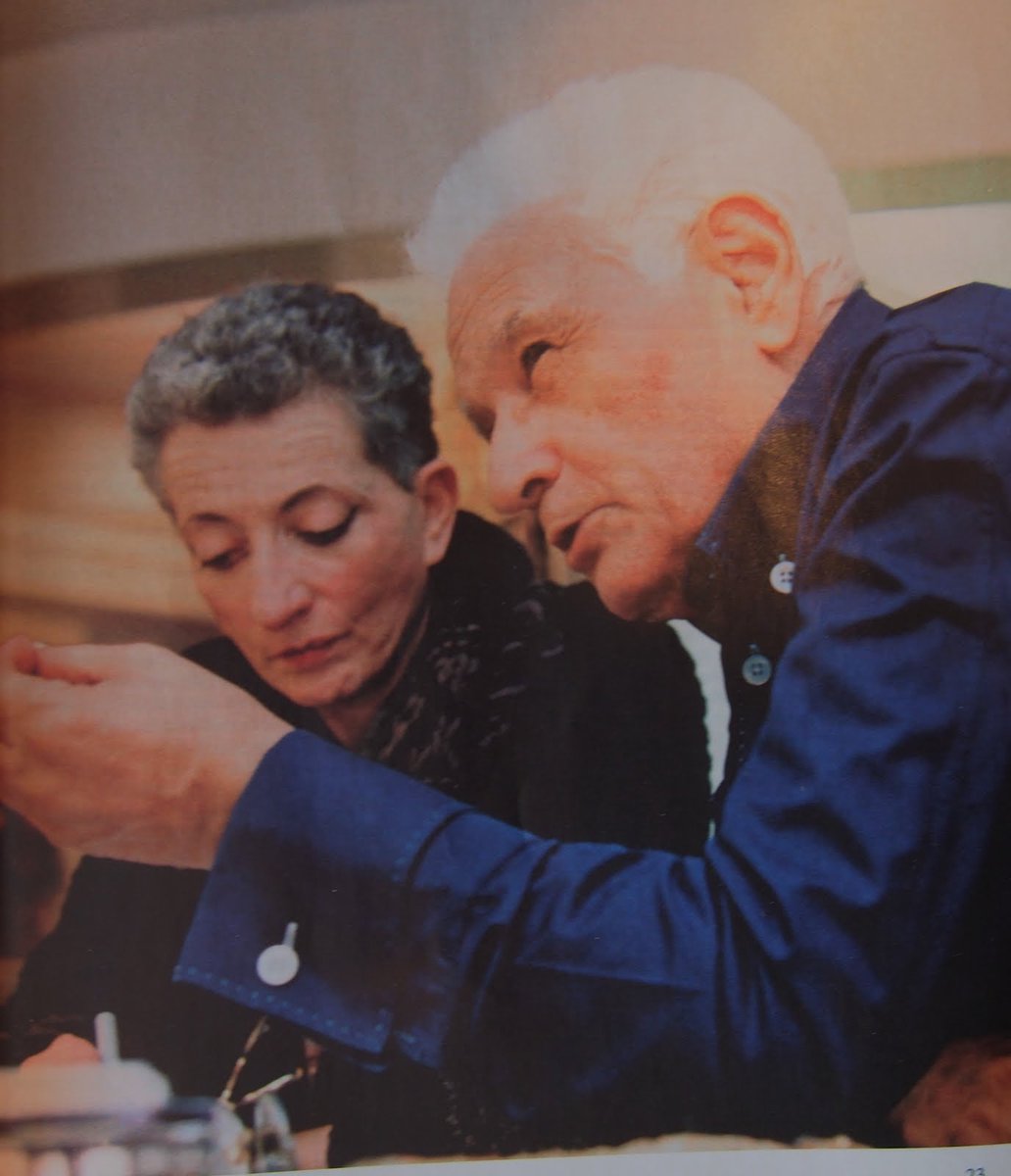By Dominic Pettman
This article has been peer-reviewed by the b2o editorial board.
At what point can we confidently say that an emerging field, or nexus of fields, has “arrived” into the academy? When there are conferences dedicated to it? When there are book series bearing the name, backed by university presses? When there are job descriptions that mention it? When there are actual degrees offered in it, as opposed to occasional classes, splashed across departments? Or when some other criteria or metric invented by institutional historians or pragmatic administrators has been satisfied? Some humanities disciplines appear to be etched forever on Mount Olympus – history, literature, philosophy (even as some departments bearing these names are being closed, absorbed, or otherwise threatened with obsolescence). When we take the long view, fields and disciplines coalesce, crystallize, evolve, calcify, and crumble. Consider how “rhetoric” is no longer a monolithic institutionalized discourse unto itself, and yet the dust of its unceremonious toppling can be found in the offices and lecture halls of so many different fields. In contrast, “cinema studies,” for instance, has been taught for nearly a century, and yet continues to fight for its own legitimacy in certain ivory halls. (“Gender Studies” has a similar fugitive relationship to the academy, sometimes being dissolved into different departments and programs, even as it enjoys a “critical mass” of student interest and faculty commitment. As do so many others.) Taken as a whole, “the humanities” have been under siege for several decades now, and something else seems to be emerging from the glowing ashes, something we might loosely label the “posthumanities.”[i] Whether this new formation will be just another field folded within the humanities, or whether it augurs the end, and subsequent renewal, of an entire tradition, remains to be seen. It is an interesting moment, however, for the arrival of the posthumanities, given that there is not yet a degree or department in this field, but a vital hive of courses, programs, conferences, and publications creating and inhabiting this new terrain.
This arrival has been a long time coming, to be sure; staggered, inconsistent, and unevenly distributed. Some might date a posthumanities orientation as beginning with Kant, and his rather tentative, equivocal anthropology. Others with the challenges to our sense of self-mastery and world dominion offered by La Mettrie, Nietzsche, Darwin, or Freud. And still others might pinpoint the decisive moment as recently as the usherings of Donna Haraway, N. Kathryn Hayles, Bruno Latour, Friedrich Kittler, and Karen Barad, with their expansion of the humanist frame to include cyborgs, animals, ghosts, objects, and subatomic particles. But however, and whenever, we choose to fix the date of induction, the posthumanities represent an unprecedented re-orientation of knowledge – and constellation of new practices – that promise to make an enormous contribution to the ongoing enterprise of self-understanding writ large. (Whereby self-understanding is the essential foundation for navigating alterity, in all its most telling or pressing forms.) More specifically, the posthumanities pay special attention to our relationship to relationships; including and especially the relationship to our tools (which themselves are conscientiously helping to reveal new relationships, as well as often rendering older relationships – say, with viruses or carbon – in a new light).
Knowledge is a transductive process, much as we have repressed this fact over the past few centuries. It is not a package passed from person to person, but a system which produces the nodes in the network – you and I – through the very process of circulation. (Or “sharing,” in today’s terminology.) Just as Nietzsche believed that our writing tools are at work, influencing our thoughts, the posthumanities – here considered a singular assemblage – is alert to the active role that technology and media play in structuring, presenting, and representing our thoughts to ourselves and each other. In doing so, this endeavor is involved in a type of media studies that is both expansive and intensive, potentially leading into every nook and corner of human investigation and exploration. The question of media (for instance, “how do different technologies determine or influence human habits in certain ways?”) evolves and expands to become more the question of mediation itself (such as, “how are human habits enframed by apparatuses of all kinds, both material and not?”). What we know, and how we know it, is now framed within a productively destabilizing ontology. We can no longer presume who the “we” is that manifests the privileged place of knowing. (Even if such certainty was rarely as certain as it seems, on closer inspection.) By opening up the “we” to alien, prosthetic elements, right from the origin of our own species-being, the posthumanities allows a more capacious – and arguably more accurate – understanding of world history, and the subjects of its jagged trajectories.
In simpler terms, if the posthuman is the name we give to the recognition that the human has always been an inherently technical creature, then the posthumanities registers the fact that we are not so much the rational animal, as the mediated animal. Everything we do, think, and communicate is always already mediated. Hence the new global interest in media studies, as something that goes far beyond the analysis of the structures and contents of communications and entertainment industries, to the very heart of our own, semiotically saturated, being.
The humanities today are a cluster of disciplines, approaches, sensibilities, values, questions, techniques, and conceptual lenses, designed to help us navigate the perplexing business of being human in a modern world (that is, a world that will be significantly different when we leave it, than when we are born into it; in contrast to our pre-modern ancestors). The humanities might thus be considered a discursive engine for producing interpretation, critique, and the ongoing evaluation of values.[ii] Reading the past – which does not mean only reading texts in the Archive, but also objects and artificial fossils of all kinds – is a necessary condition for orienting ourselves in time and space: a capacity that some critics (notably Bernard Stiegler) believe that we are swiftly losing; becoming existentially disoriented, and unable to sustain or contribute to the trans-generational human project. The humanities have built their reputation and authority on their ability to act as not just a moral compass for our kind, but an aesthetic astrolabe and ethical protractor. By paying close attention to language, and other semiotic systems, which allow the encoding and decoding of experience, and subsequent life-lessons, the humanities are engaged with both the transfer and production of knowledge across epochs. They are concerned with not just interpreting and understanding the “transgenerational loops” that make up one’s identity, direction, and purpose, but actively maintaining them, while also forging new ones, according to new desires, imperatives, contexts, and goals.
Some would thus contend, myself included, that the humanities (again, speaking in the singular) has been engaged in “media studies” since its inception, avant la lettre. (Consider John Ruskin and Lewis Mumford on architecture, or even Leonardo da Vinci on the virtual technics of war.) On the other hand, one could also conduct a “media studies” style revisionist history of the humanities themselves: pointing to the technologies, organs, and innovations that allowed this novel abstract entity to coalesce and then continue within its own globalizing conatus (writing materials, pedagogic architectures, libraries, sailing ships, colonial communication channels, etc.).
Media Studies
Media Studies, as a quasi-discipline in the university (speaking in the North American context) emerged out of the broadcast-based soil of Communications Departments, the post-war discourse of cybernetics, the emphasis on formal structures in the work of the Toronto School, the rise and rise of cinema studies, as well as McLuhan’s meta-literary insistence on technological ecologies.
“Media studies” is currently one of the most capacious interdisciplinary spaces in the academy, which is why it attracts so many refugees from scholars who feel cramped by their own parent discipline. As with English departments in the 1980s and 1990s, before many lifted the drawbridge in the new millennium, Media Studies departments tend to house a diverse group of thinkers and makers – from journalists, to filmmakers and videographers, to podcasters to sound studies scholars, to cinephiles, theorists, designers, analysts, fetishists, feminists, activists, fans, and a new strain of archaeologists. This is its strength, and its potential weakness. The rise of the “studies” model – as with Cultural Studies, Gender Studies, Food Studies, etc. – exhibits a growing interest in clustering work around an object of study, rather than a specific approach or methodology. This can lead to very exciting, paradigm-shifting work. But it can also result in a Babel of different agendas and registers, which often only coalesce in the eyes of administrators or in wishful phantom student demographics, rather than according to any specific internal logic or organizing principle. This collective – and only partially coherent – endeavor, it is true, threatens to fall apart. (Especially as the other, more established and traditional disciplines wake up to the importance of media to their own legacy and mission, and begin to annex parts of the former domain of Media Studies, sometimes reinventing the wheel in the process.) But in the meantime, the effort to keep this big tent upright has produced some vital ideas and exciting subfields. The very fact that we are obliged to repeatedly ask, “what is Media Studies?” bodes well for the increasing understanding of its object (or rather many objects . . . and vectors), since this is an ongoing, generative question. (And in this sense, McLuhan’s famous title, “Understanding Media,” was as much an asymptotic challenge, as a simple description of his project.)
Indeed, in an age of fake news, meme farms, bitcoin, smart-phones, and tweeting presidents, the other disciplines can no longer ignore the importance of media. They can no longer pretend that it has only a prosthetic relationship to human concerns, but is rather constitutive of them. (Something media scholars have always been aware of.) I might hasten to add, however, that when we take the long view, this new disciplinary interest in technics makes perfect sense, given that media studies has itself incorporated concepts and methods from disciplines which preceded it. I’m thinking here of historians like Joseph Needham, Fernand Braudel, and Wolfgang Schivelbusch; anthropologists like Gregory Bateson and André Leroi-Gourhan, sociologists like Manuel Castells and Jean Baudrillard, political scientists like Langdon Winner, and philosophers, such as Martin Heidegger, Gilbert Simondon, Gilles Deleuze. (Not to forget Plato, of course, whose famous cave is still de rigeur for week one of any Introduction to Media Studies course.) It is also necessary to remember that much contemporary media studies also leans heavily on the Frankfurt School, French poststructuralists, and the Birmingham Cultural Studies school.
In short, Media Studies is at a very interesting cross-roads, given that we can no longer assume we all agree, or even instinctively know, what counts as “media.” Everything can be considered an enabler of mediation (even objects or phenomena that seem to stubbornly refuse or even discourage communication; such as black boxes or censorship regimes). I myself have written about love as a technology, and taught a course on food as a cultural medium. The challenge is thus to find and nurture the solar principle, or principles, around which our common questions and concerns can revolve.
What is the difference between media studies and the philosophy of technology? Or an anthropology of communication? Or a material history infrastructures? All of these approaches have something significant to contribute to the study of media. But then what makes media studies distinctive? The difference, I would venture, is that media studies begins with the object, or the vector. It begins with the in-between; the interface; the threshold. Nothing is taken for granted, when it comes to considering communication or “impact.” Indeed, the arguments offered by the traditional humanities and social sciences do indeed look very different when we zoom in on the material arrangements that underpin great social changes or cultural shifts. (McLuhan on the epochal shift afforded by the horse-stirrup-knight-lance assemblage is a classic example here.)[iii]
Hence the new interest in “media archaeology” and what Siegfried Zielinski calls “the deep time of the media.”[iv] The pre-Columbian quipu of the Inca – a collection of fibrous and colorful knots – in hindsight, appear to be precursors to databases or indexes. And for a popular media historian, like Tom Standage, the telegraph can be called the Victorian Internet (just as it becomes possible to tell the tale of so-called “social media” over three millennia).[v] Indeed, history looks very different when we view it from the point of view of the technologies that enabled it. (I’m thinking of Manuel de Landa’s “robot historian,” who narrates the evolution of war from the perspective of different types of weapon, rather than the people they killed.)[vi] As this example suggests, there is a danger of evacuating, or at marginalizing, humans, when we focus on media. I would argue, however, that this kind of decentering is crucial if we are to in fact relocate the human in a more measured, ethical – and, dare I say, even cosmically accurate – way.
This brings us back to the posthumanities; in which the “post” is not merely a chronological fact of coming afterwards, but a kind of ruptured continuity, mutated legacy, or even instructive haunting. As with postcolonialism, postmodernism, or the posthuman, we can never get fully “past the post,” as it were. The key term continues by its very presence, as something supposedly transcended or left behind, but persisting nevertheless, leaving its traces; continuing to inform and permeate the present and the future. The claim here is that the posthumanities, far from rendering the traditional humanities obsolete, reinvents them, giving them a new lease on life.
Critical Media Theory
One avatar of the posthumanities is that young branch of media studies known as “critical media theory,” of which I consider my own work just one example. Critical Media Theory relies heavily on the legacy, methods, and ethical spirit of the humanities; but does so with a keen (and rather urgent) sense of its short-comings and blind-spots, in the age of the anthropocene.
Critical Media Theory complicates McLuhan’s definition of media as “the extensions of man,” just as McLuhan himself, at times, recognized man may be extensions of media. (As when he impishly suggested that human beings could be considered “the sex organs of the machine world.”)[vii] Media is thus posited as ubiquitous, atmospheric, perhaps even elemental. From this perspective, the media is not just newspapers and televisions and cell-phones, but perhaps even the environment itself (as John Durham Peters, Jussi Parikka, and Shannon Mattern have argued).[viii] This approach renders the nature/culture divide moot, as we begin to see the use of organic media in the natural world (for instance, cetaceans using sonic communication, or cuttlefish signaling to each other through the phasing of colors, and so on). Critical media theory thus dovetails in some interesting ways with the new interest in “environmental humanities,” as the natural sciences open up new doors, and indeed vast new territories, for the study of media. (Hence the uptick in interest in the work of Estonian biologist Jakob von Uexkull, who emphasized – and even tried to represent – the different perceptive environments, or umwelten, of different species.)[ix]
Again, the question concerning media shifts from being one primarily about epistemology (“what we know, and how we know it?”), to one principally about ontology (“what is this thing that thinks it knows, and on what basis does it make this assumption?”). Critical Media Theory explicitly acknowledges the difficulty that media studies has had recognizing its proper object from within itself (and thus actively seeks perspectives from other intellectual umwelten, such as systems theory, biology, art history, process philosophy, science and technology studies, etc.). It is also less concerned with issues of representation (or ideology), than the scaffolding which allows ideological effects to circulate at scales and speeds previously unconsidered. (Think of flash-trading, CRISPR gene technologies, 3D printing, or high speed algorithms.) At one time, literary theory, for instance, felt it had a strong handle on “media” as a fledgling discipline, because of its own profound grasp of the mechanics of narrative. But this is no use when it comes to the examples I just mentioned. And even in the mid-twentieth century, in the case of cinema, attention to narrative does not account for the subtle but real differences between, say, Technicolor and Color-by-Deluxe.[x] Critical Media Theory thus aims to be both hyper-timely (keeping up with cutting-edge innovations, like block-chain or biotech), and also deliberately untimely (in appreciating the longer and larger context from which all innovations emerge and are received).
Indeed, new media always emerge from, and are encountered within, a cultural milieu or matrix. For me, cultural studies and media studies are a mobius strip, tracing the often seamless distinctions between form and content, infrastructure and ideology. The wager of Critical Media Theory is that by asking more fundamental, theoretical questions – as well as forging unexpected new ones – it is possible to more directly and usefully engage with the unstable and unpredictable landscape of media.
We should therefore never assume we really know, in a positivist sense, what technology is, or what our relationship to it is (as if these are static or timeless). Indeed, some of the most provocative and arresting work being done in this area suggests that the human body is itself an exquisite form of immanent prosthetic technics. (I’m thinking especially of the work of David Wills, who is associated with the school of “originary technicity.”)[xi]
Which brings us back, once again, to the posthumanities.
The Posthumanities
Forced into a nutshell, the posthumanities describe the humanities after the human. As mentioned already, however, this does not mean that we simply do away with the human, as if we could, even if we wanted to. Rather, it obliges us to reconsider the project of the humanities after the human has become a problem twice condensed. (According to the logic in which the humanities were always concerned with delineating the ambiguities of our species-being.) The difference in this case is that rather than exploring the enigma of ourselves from a solid, anthropocentric perch – with a goal of enlightenment, self-understanding, actualization, cosmopolitan concord, and secular salvation – the posthumanities revisits the human scene with a great diversity of perspectives, intentions, and agendas; as well as with new de- and re-constructive instincts.
One critique of “the posthuman turn” is that it allegedly moves the critical and political goal-posts at a crucial moment in the ongoing battle for social justice. The struggle to be recognized as fully human, by those subjectivities deemed historically not-quite, are now – in a fashionable twist of circumstance, authorized by the most enfranchised – revealed to be naïve, misguided, or moot. While it is true that a certain (white, masculinist) strain of posthuman thought exists – one that reeks of the Promethean (with social-Darwinist resonances), usually operating under the name of “transhumanism” – this is primarily a preemptive reflex against the ascendent deconstruction or critique of humanist chauvinism. Transhumanism, or macho posthumanism, attempts to augment or fortify the imagined community of the human, in a kind of engineered identity panic. It is thus a far cry from the kind of anti-foundational project of radical co-belonging that I am trying to trace here. Questioning the category of inclusion (“the human”) is, ultimately, a more effective political project than trying to measure up to rigged (racist, sexist) criteria. Moreover, it abolishes the power-position of prime arbiter, judge, or taxonomist. One can decide for oneself what forms of being and belonging are most important, as well as owning and defining the terms of one’s own becoming (as we see in cultural movements like queer negativity, afrofuturism, or afropessimism).[xii] Indeed, posthumanities opens the halls and meeting rooms of the academy to those figures previously deemed “bad subjects”: women, the non-white, the indigenous, the poor, the queer, the differently abled (both physically and cognitively), the aesthetically inclined, the affectively attuned, the non-human, the cybernetic, and even the essentially electronic. The posthumanities is thus emphatically not just about expanding the possible topics on which a scholar might turn their attention, but expanding the frame to allow many different types of intellect contribute to the conversation, ask new questions, bring new experiences, new bibliographies, as well as new tools, perspectives, methods, and motivations. Man cedes the stage to the multitude. The anthropos, to the anthropotechnical milieu.
But if the human is no longer the substrate or goal of the humanities, what might it be? How might we refigure our sense of shared species-being, far beyond the narrow, ethnocentric, phallic, logocentric template that clings on to this day? (Questions now associated with the remarkable work of Sylvia Wynter.)[xiii] Indeed, we may consider the human to be “the species without qualities”: a creature with no clear defining feature, other than its deep need to find a stable definition and raison d’etre for itself. Bernard Stiegler calls this state of originary lack, at the core of our own sense of self and purpose, “the default of being.”[xiv] He argues that the human is posthuman from the very beginning, and not a recent historical development, since we started using tools from our origins as prosthetic means to compensate for that which we lacked. (Freud would come to call us, with a heavy dose or irony, “prosthetic gods,” on account of this paradoxical Promethean promise and dependence.) As such, the human is a kind of negative space, on which we project our own fantasies of essence (rather than the messy business of provisional and local becoming). Giorgio Agamben notes that Linnaeus himself, the father of taxonomy, could not muster up any positive attribute of the human to distinguish itself from the other hominids, other than its ability to point at itself, and give itself a name.[xv] (The shadow of Eden thus looms long over the scientific method.) Agamben called our attempts to use logic and discourse to give ourselves unique qualities “the anthropological machine,” a cultural device for sorting the human from the non-human according to redundant criteria. (Or better yet, for producing the human from extra-human or infra-human materials.) We could thus conceive of “humanity” in similar terms to the nation-state, as an “imagined community” or “consensual hallucination.” (I have elsewhere argued that human exceptionalism is akin to American exceptionalism. Certainly, there is no denying that this country is different and unique. But whether that is something to celebrate or emulate? Well . . .)
In any case, the posthumanities embraces these shaky foundations, rather than try to repress or deny them. It considers the ongoing identity crisis called “humanity” – what I called “human error,” the erroneous assumption that we are, simply and self-evidently human – into an opportunity. [xvi] As John Gray notes, there is no such thing as “humanity,” only humans.[xvii] And as Peter Sloterdijk insists, a person who grows up in front of a computer is different to someone with a book.[xviii] (A reality that we teachers are obliged to confront every day, as our students seem to represent not so much a generation gap, as an interspecies divide, thanks to the cognitive monopoly of smartphones.) If the humanities were largely preoccupied with the question, “Why is the human?,” the posthumanities asks, “Where is the human? How is the human? When is, or was, the human?”[xix]
Two names in particular deserve mention, as helping to establish and promote the practice and ethos of the posthumanities: Cary Wolfe and Rosi Braidotti. Cary Wolfe edits an influential series with this name, and dedicated to this idea.[xx] And the working assumption here, to quote the publisher’s website, is that, “traditional humanism is no longer adequate to understand the human’s entangled, complex relations with animals, the environment, and technology.”[xxi] The posthumanities is thus animated, and held together, by the tension between a conception of the posthuman as primarily historical, on the one hand, and philosophical, on the other. The challenge is certainly not to nail down the precise date when we stopped being fully, organic humans – or to anticipate one in the future – but to appreciate the ongoing co-evolution of our species with our machines, liberated from a specific, moralistic origin story or teleology. If, to paraphrase Bruno Latour, “we have never been human,” then we give ourselves greater license and latitude to attend to the task of both self-redefinition, and reorientation towards manifold Others with whom we are intrinsically entangled. Rosi Braidotti is the other most visible champion of the posthumanities, which she rightly believes to be an intrinsically feminist project.[xxii] Braidotti is in fact on the brink of publishing a co-edited collection exploring the posthumanities as an emerging meta-discipline, or sequel to the humanities.[xxiii]
Both Wolfe and Braidotti have been criticized, however, for simply using humanities methods – and established academic protocols and privileges – to examine the posthuman, rather than following their own rhetoric to its logical conclusion (i.e., radical new methods and approaches). For the posthumanities to be more than simply a description of a new field of study – rather than a comprehensive reboot of the humanities themselves – we need to be creative and rather brave, especially when it comes to questioning our own habits of both mind and deed. As an unnamed spokesperson for The Center for Disruptive Media notes: “[I]f knowledge and research are the result of complex processes involving both human and non-human objects and actants, what does this mean for politics and ethics? In short, how can we perform knowledge-making practices differently, to the point where we actually begin to take on (rather than take for granted, repress or ignore) the implications of the posthuman for how we live, work and act as academics and researchers? What can the humanities become in all these entangled constellations?”[xxiv]
In any case, both the humanities and the posthumanities situate themselves “after the human,” in at least two senses: the first, after we became posthuman hundreds of thousands of years ago, wielding flint and bone; and after in the sense of, “in pursuit of,” as a figure beyond the horizon, that we have not yet been able to become, blocked by our own sense of previous or automatic accomplishment. (What Derrida called, “the messianic without a Messiah.”[xxv] A trope that also brings to mind Gandhi’s famous quip, “What do I think about Western Civilization? I think it would be a good idea.” We might say the same of the human.)
I myself have sought the elusive “human element” in places where we most expect to find it: love, free will, the voice, the deliberate gesture, and the application of intentional attention.[xxvi] However, I have yet to find it. Rather than an exceptional human element, I have encountered complex symbiotic iterations of the organic and the machinic, which themselves produce forms of intelligence, some of which then, belatedly, recognize themselves as human. (Following the lines of a type of real-world geometry I call “the cybernetic triangle”; that is, the trialectic overlaps and distinctions between humans, animals, and machines.)[xxvii] This is why I consider the media – again, broadly defined – as a vanity mirror for our ongoing fragile sense of self. We use words, images, and sounds in flattering ways to reinforce our ever-threatened sense of species-being (even, and especially, when we are admonishing ourselves for not living up to our true “humanity”). This is a masochistic tic which makes us feel simultaneously inadequate, guilty, compassionate, at least latently humane, and thus (ultimately) absolved. In doing so, we continue to exclude, ignore, demean, neglect, and exploit, those who we do not deem to measure up to full humanity (not forgetting this is the subject of the humanities). Hence, once again, the need for the posthumanities. To shine a light on those who were obliged to remain obscured in darkness precisely to reflect our own portraits of humanhood.
A Gesture of Conclusion
If the humanities are a technology or discursive machine for producing the kind of subject that would recognize itself in the process of such an interpellation (secular, rational, individual etc.), and act accordingly, the posthumanities are a new perspective on this process, being especially attentive to different kinds of subjectivities, environments, and ways of thinking and being. The posthumanities “remediates” the humanities for a more inclusive mission, while also “premediating” the kinds of (as yet unknown) knowledges which the new millennium so urgently calls us to respond.[xxviii] As such, it is not just a feminist project, but an anti-colonial one.
Just before I mentioned “the deliberate gesture” as another place that I sought to find the so-called human element, only to encounter a strange alloy of animality, technics, and the negentropic byproduct of their often agonistic entanglement. (Something others might call intelligence, or semiotic tendencies.) As humans, and humanities scholars, we are deeply interested in our own gestures. And yet the closer one looks, the clearer that it becomes that we require prosthetic implements, and other non-human agents, in order to make them. This irony is something that media theorist Vilem Flusser was extremely sensitive to, as he detailed many key gestures that we cherish, including the gesture of writing, photographing, smoking a pipe, and even turning a mask around.[xxix] (The New York Times, on the day I wrote this paragraph, ran a story on the new gestures that the latest iPhone coaxes from its increasingly creaturely consumers.)[xxx]
Flusser believed that human gestures have been alienated and constricted by modernity, or rather by our stagnant “posthistorical” condition, and that while gestures are not themselves free, something about freedom is still expressed in them.[xxxi] How might we relate to technology in an active way, not simply adapting, or even submitting, to the subtle violence of its protocols and subliminal imperatives? (For instance, the rise of so-called “racist technologies,” in which the biases of programmers is coded into the algorithm; as with face-matching software, or into the medium itself, as with Kodak film.)[xxxii] Such a question needs to be addressed from a posthumanist perspective if we are not to simply lapse into a nostalgic, romantic, neo-Luddite position (which assumes, naively, that the human somehow predated technics, before being contaminated by it).
In collaboration with historian, Carla Nappi, I will be soon publishing a book called Metagestures, in which we enlist the rather novel methodology of “fictioning,” as a way to pay a different kind of attention to primary sources, which in turn, creates different kinds of knowing.[xxxiii] Together we went through Flusser’s inventory of gestures, one by one, and then built short stories of our own – miniature worlds, in fact – in which his ideas are reanimated, repurposed, and redeployed. In doing so, we gained a new understanding of, to quote Nappi, “the ways that materiality and material experience emerge out of relations and relationships.”[xxxiv] This collaborative practice also forced a deeper appreciation of the process whereby “the kind of orientations that relate bodies in space and time leave traces in our documents.”[xxxv] Metagestures is thus an attempt to go beyond a default theoretical response to a theoretical text, by centering play, poetics, collaboration, and creative experimentation.
Indeed, there is an emerging wave of writing from academics who feel enervated by the same intellectual – well – gestures; and who seek to import new voices, strategies, conceits, and genres into our discursive worlds.[xxxvi] This project is one such example of this new wave, originally inspired by Vilem Flusser’s own willingness to go beyond the conventions of the analytical essay towards more speculative and mischievous projects (of which his Vampyroteuthis Infernalis – a philosophical treatise on the ontology of the giant squid – is his most famous example).[xxxvii] Metagestures was thus born from a dual effort to approach scholarly life as an art practice; and the hope is that it will inspire others in turn to treat so-called primary sources with a different kind of attention and intention.
I finish with this example not only as an instance of a (not uncontroversial) technique that practitioners of the posthumanities might use – in their own projects, and for their own purposes – but also in the hopeful, utopian spirit of Flusser himself. Since, despite all evidence to the contrary, this postmodern Renaissance man believed that our gestures, no matter how small, modest, or fleeting, contain the seeds to transform a rather dire global technical-political situation into something more, well, perhaps not “human,” but certainly more thoughtful, open, attentive, creative, generous, ingenious, instructive, seductive, and free.
The earlier attempts to challenge the hegemony of so-called Man, or an exclusivist understanding of humanity (such as the one now under the umbrella of cultural studies), tended to consider the media as an object or site to be analyzed, exposed, deconstructed. The posthumanities, especially in the guise of critical media theory, consider media to be part of the DNA of the human. (Indeed, DNA is itself a case of natural-technics, now open to cultural interventions.) The humanist is now rendered humanish. I’ve defined the posthumanities as the humanities after the human. It therefore seeks to help forge a new post-ideological notion of the human, or at least clear a conceptual space for the hitherto elusive human to emerge. Not in order to catch, identify, and tag such a specimen, but to better appreciate the manifold ways in which human beings can be human. (But not only human.) What some call “hominization” is thus not the carrying forward, like a flickering flame, of the metaphysical, hypocritical essence of our kind. Rather it is the cooperative process by which we construct new machines for dismantling patriarchy, white supremacy, predatory capitalism, the factory farming system, and all the other firewalls we have constructed against a truly inclusive and compassionate project of human becoming.
Dominic Pettman is Professor of Culture & Media at the New School for Social Research and Eugene Lang College. He is the author of numerous books on technology, humans, and other animals; including Creaturely Love (Minnesota) and Sonic Intimacy (Stanford). His forthcoming book Metagestures, co-written with Carla Nappi, will be published by Punctum Press in March.
NOTES
[i] In retrospect, a patient historian of ideas and institutions may be able to piece together the puzzle of why the posthumanities emerged where and when it did so. Writing in the midst of this emergence, however, we might simply note that one of the main motivations driving this particular train is the urgency with which any sense or security of an actual existing future is now threatened by climate change, environmental devastation, plundernomics, and other factors which seem to be canceling the very taken-for-granted temporality on which transgenerational intellectual work depends. The posthumanities is thus a pragmatic (perhaps even partly cynical) attempt to keep genuine interdisciplinary thought alive, in an eco-system in which scholars are encouraged to bunker down in established canons and disciplines to survive; as well as being a more idealist and ambitious attempt to provide real answers to extremely complex and pressing problems. (After-Auschwitz and after-Hiroshima, so to speak, but before whatever name we will be giving to the next spectacular anthropogenic catastrophe; even as the latter mostly unfolds as an insidious and imperceptible “slow” or distributed form of violence and suffering.)
[ii] For an interesting recent taking stock of this ever-green theme, see Simon During, “The Idea of the Humanities,” unpublished, but available, http://www.academia.edu/34926361/The_idea_of_the_humanities_2017_
[iii] Marshall McLuhan, War and Peace in the Global Village (San Francisco: Hardwired, 1997), pp.27-31.
[iv] Siegfried Zielinski, Deep Time of the Media: Toward an Archaeology of Hearing and Seeing by Technical Means (Cambridge, MA: MIT Press, 2008).
[v] Tom Standage, The Victorian Internet: The Remarkable Story of the Telegraph and the Nineteenth Century’s On-line Pioneers (New York: Bloomsbury, 2014). See also, Tom Standage, Writing on the Wall: Social Media – The First 2,000 Years (New York: Bloomsbury, 2014).
[vi] Manuel de Landa, War in the Age of Intelligent Machines (New York: Zone, 1991). For my own riff on this theme, see “Some Remarks on the Legacy of Madame Francine Descartes – First Lady and Historian of the Robocene – on the Occasion of 500 Years Since her Unlawful Watery Execution,” Public Domain Review, https://publicdomainreview.org/conjectures/some-remarks-on-the-legacy-of-madame-francine-descartes/ (accessed June 11, 2018).
[vii] Marshall McLuhan, Understanding Media: The Extensions of Man (Cambridge, MA: MIT Press, 1994), p.46.
[viii] John Durham Peters, The Marvelous Clouds: Toward a Philosophy of Elemental Media (Chicago: University of Chicago Press, 2016).
Jussi Parikka, A Geology of Media (Minneapolis: University of Minnesota Press, 2015).
Shannon Mattern, Code and Clay, Data and Dirt: Five Thousand Years of Urban Media (Minneapolis: University of Minnesota Press, 2017).
[ix] Jakob von Uexküll, A Foray into the Worlds of Animals and Humans: with A Theory of Meaning (Minneapolis: University of Minnesota Press, 2010).
[x] An observation I owe to McKenzie Wark, in conversation.
[xi] David Wills, Dorsality: Thinking Back through Technology and Politics (Minneapolis: University of Minnesota Press, 2008). See also Arthur Bradley & Louis Armand (eds.), Technicity (Prague: Litteraria Pragensia, 2014).
[xii] See Lee Edelman, No Future: Queer Theory and the Death Drive (Durham: Duke University Press, 2004), and Alexander G. Weheliye, Habeas Viscus: Racializing Assemblages, Biopolitics, and Black Feminist Theories of the Human (Durham: Duke University Press, 2014), among many others.
[xiii] Sylvia Wynter, On Being Human as Praxis (edited by Katherine McKittrick), (Durham: Duke University Press, 2015).
[xiv] Bernard Stiegler, Technics and Time 1: The Fault of Epimetheus (Stanford, Calif.: Stanford University Press, 1998).
[xv] Giorgio Agamben, The Open: Man and Animal (Stanford, Calif.: Stanford University Press, 2004).
[xvi] See my book, Human Error: Species-Being and Media Machines (Minneapolis: University of Minnesota Press, 2012).
[xvii] John Gray, Straw Dogs: Thoughts on Animals and Humans (London: Granta, 2003), p.12.
[xviii] Peter Sloterdijk, “Rules for the Human Zoo: A Response to the Letter on Humanism,” Environment & Planning: Society & Space, 27: 1, 2009.
[xix] Geoffrey Winthrop-Young has touched on these questions, especially as they relate to the subfield of “cultural techniques.” (For example, in early agrarian times, fences, pens, and gates performed and reinforced the animal/human distinction.) See “Cultural Techniques: Preliminary Remarks,” Theory, Culture & Society, 30(6), 2013, pp.3-19.
[xx] Wolfe is also the author of the widely-cited What is Posthumanism? (Minneapolis: University of Minnesota Press, 2009).
[xxi] See https://www.upress.umn.edu/book-division/series/posthumanities (accessed June 11, 2018).
[xxii] Rosi Braidotti, The Posthuman (Cambridge: Polity, 2013).
[xxiii] Cecilia Asberg & Rosi Braidotti (eds.), A Feminist Companion to the Posthumanities (New York: Springer, 2018).
[xxiv] “Disrupting the Humanities: Radical Methodologies for the Posthumanities,” seminar (2015), hosted by the Center for Disruptive Media and Coventry University. https://openreflections.wordpress.com/2015/02/24/2953/
[xxv] Jacques Derrida, Specters of Marx: The State of the Debt, The Work of Mourning & the New International (London & New York: Routledge, 2006).
[xxvi] For love and the human, see both Love and Other Technologies: Retrofitting Eros for the Information Age (New York: Fordham, 2006) and Creaturely Love: How Desire Makes Us More, and Less, Than Human (Minneapolis: University of Minnesota Press, 2017). For a discussion of free-will, see “The Orc and the Penguin,” in Look at the Bunny: Totem, Taboo, Technology (Wincheter, UK: Zero Books, 2013). For my consideration of the voice, see Sonic Intimacy: Voice, Species, Technics (Palo Alto: Stanford University Press, 2017). For a meditation on the deliberate gesture, see Metagestures (Punctum, 2019). And for my take on intentional attention, see Infinite Distraction: Paying Attention to Social Media (Cambridge, UK: Polity, 2016).
[xxvii] See Human Error, especially pp.5-8.
[xxviii] See Jay Bolter and Richard Grusin, Remediation: Understanding New Media (Cambridge, MA: MIT Press, 2000), as well as Richard Grusin, Premediation: Affect and Mediality After 9/11 (New York: Palgrave MacMillan, 2010).
[xxix] Vilem Flusser, Gestures (Minneapolis: University of Minnesota Press, 2014).
[xxx] Ann-Marie Alcántara, “All the New Gestures You’re About to Learn on the iPhone X, New York Times, December 26, 2017. https://www.nytimes.com/2017/12/26/smarter-living/using-iphone-x.html
[xxxi] Vilem Flusser, Post-History (Minneapolis: Univocal, 2013).
[xxxii] See, for instance, Genevieve Yue, “China Girls on the Margins of Cinema,” October 153 (Summer 2015), pp. 96–116.
[xxxiii] Carla Nappi & Dominic Pettman, Metagestures (Punctum, forthcoming 2019).
[xxxiv] Carla Nappi, “Metamorphoses: Fictioning and the Historian’s Craft,” PMLA 133.1 (2018), pp.160-165.
[xxxv] ibid.
[xxxvi] See, for instance, the new journal, Thresholds (openthresholds.org), and the presentations and workshops on “collaboration, engagement, attention,” hosted by Lauren Berlant and Kathleen Stewart (such as, https://www.gc.cuny.edu/All-GC-Events/Calendar/Detail?id=44099)
[xxxvii] Vilem Flusser, Vampyroteuthis Infernalis: A Treatise, with a Report by the Institut Scientifique de Recherche Paranaturaliste (Minneapolis: University of Minnesota Press, 2012).



